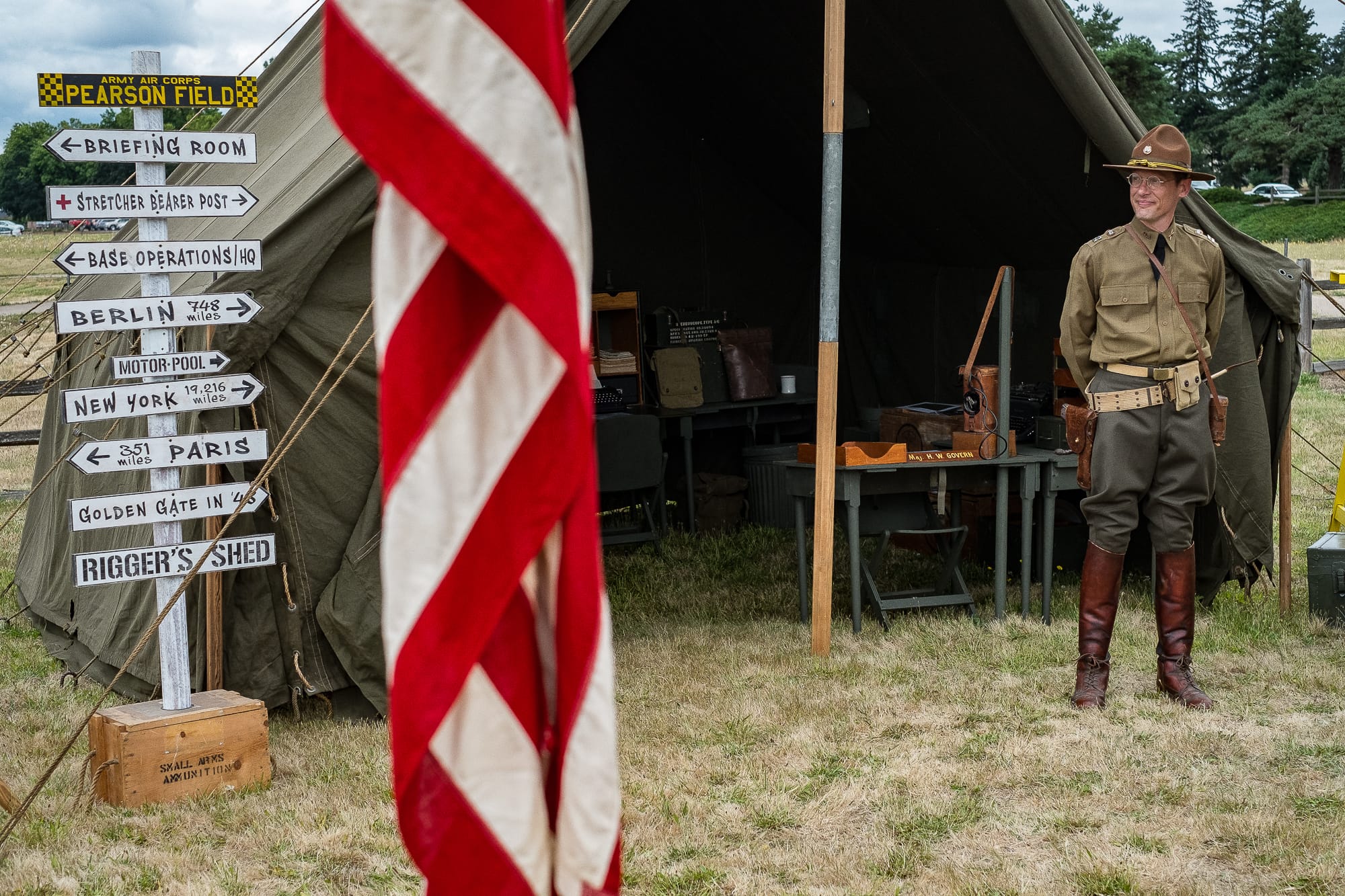Visitors to the Fort Vancouver National Site had the opportunity to glimpse a defining moment of American history on Saturday.
Dressed as soldiers from the European Theater of World War II, members of the Living History Group Northwest set up camp and parked vehicles to give a small taste of what life was like about a mile behind the battle lines of Europe.
About 10 large tents filled with historical artifacts reflected the working and conditions of officers, medics, radio personnel and other soldiers. A motorcycle, a transport truck and three jeeps, all carefully restored, were also parked at the scene. One jeep looked as if it had just returned from a precarious mission. Spent machine gun shells and a couple of empty cigarette boxes littered the floor. Between the seats were an era-appropriate carton of smokes and a couple of candy bars.
Clad in high leather boots, olive green pants and a shirt decorated with a small black tie and a handful of pins, Olympia resident Christopher Miller reflected what an officer might have looked like at the start of the war. He brought about a quarter of his collection — two tents filled with radios, typewriters and various charts and boxes — to exhibit. One tent resembled the sleeping quarters; the other — with its work equipment and antique radio playing WWII era music — reflected the work space.
“I think the music is important because it takes people back,” he said. “Museums seem to stress stimulation through sight and sound.”
But unlike a museum exhibit, Miller said, allowing people to walk through his tent and sometimes touch the artifacts affords people a deeper understanding of a watershed moment in history.
“Museums put a barrier between the public and the exhibit,” in a way that can feel sterile or off-putting, he said. “I want people to be able to get up close and personal.”
One of the visitors to the display, 18-year-old Spencer Gwinn, is a fledgling collector of WWII memorabilia himself. He went to admire the collections and learn more about the tools used at the time.
“It’s nice seeing it in an arrangement and not just sitting at home,” he said.
It’s the first time the group has visited Vancouver.
Eric Porter, chairman of the Living History Group said the Fort was an appropriate choice for the display because of its long military history.
According to Fort documents, the city’s position in the north-south transportation routes and deep-water port made it an important asset in the war effort.
Local aluminum plants produced enough material for 3,000 planes a month. Just before the war the Vancouver Barracks swelled with troops and Citizen’s Military Training students.
Pearson Field also became an important intermediate landing stop and hem to a large number of reserve pilots.
The Kaiser Shipyards were established in 1942 and operated around the clock, producing more than 100 vessels to aid in the war effort.
“We’re really excited to have the opportunity to do it and hoping to make it annual event,” Porter said.




